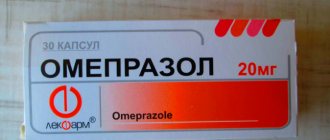Insulating gas masks are an effective means of protecting the respiratory tract from harmful gases, vapors, aerosols and other harmful substances. In this article we will look at the operating principles, types and main characteristics of insulating gas masks, as well as their application in various fields.
Operating Principle of Insulating Gas Masks
An insulating gas mask is an individual means of protection that filters inhaled air and traps harmful substances. The main components of a self-contained gas mask include:
Filter Element: The filter located on the gas mask consists of materials that can trap particles and gases.
Mask: A seal that fits the face prevents harmful substances from entering along the edges of the mask.
Exhalation Valves: Allow exhaled air to escape from the mask, preventing it from condensing inside.
Fastening: Adjustable straps and clips ensure the gas mask is securely attached to the user's face.
Types of Insulating Gas Masks
Full Face Gas Masks: Covers the entire face and provides protection to the eyes, face and respiratory tract.
Half masks: Cover only the nose and mouth, often used with safety glasses.
Gas masks with Air Supply: Supply of clean air through filters or air intake devices.
Gas masks for Highly Dangerous Substances: Specialized gas masks for protection against certain chemicals.
Application of Insulating Gas Masks
Industry: Protection of workers from harmful vapors, gases and aerosols in the chemical, oil, and metallurgical industries.
Medicine: Used in laboratories and hospitals to protect against infections and chemicals.
Fire Safety: Used by rescuers when extinguishing fires that release toxic substances.
Military Domain: Widely used in military applications to protect against nuclear, biological and chemical attacks.
Safety in Emergency Situations: In case of accidents, emergency spills or other emergency situations.
Selection and Operation
Size Selection: The respirator must fit snugly to the face and its size must be appropriate to the physiological characteristics of the user.
Testing and Training: Before use, employees must be tested and trained on proper wear and use.
Regular Inspection: Gas masks are subject to regular inspection and maintenance, including replacement of filters and seals.
Compliance with Instructions: It is important to follow the manufacturer's instructions for using and storing the gas mask.
Insulating gas masks are an important means of ensuring safety in various fields of activity. The correct selection, use and maintenance of a gas mask help protect the health and life of people in harmful and dangerous environments.









